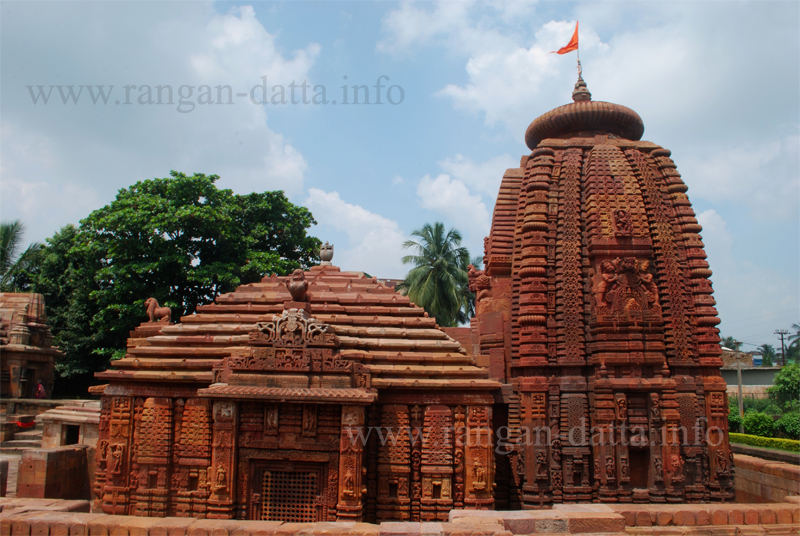Next weekend you can be at ... Bhubaneswar

Bhubaneswar, literally meaning the seat of the Lord of the universe, is known as the Temple City of India. For the last 1,500 years Kalinga (present-day Orissa) has been ruled by several dynasties and each tried to outdo the other by constructing magnificent temples, resulting in a huge concentration of temples in Bhubaneswar.
Legend has it that the city once housed a thousand temples, but many of these have crumbled to dust. Many more have been reconstructed into modern structures.
The few that have survived the test of time and still stand to this day are worth a visit and can well be your next weekend destination, although spending just a weekend would do gross injustice to the spectacular temples of Bhubaneswar.
The temples are located in the old city and are situated around the Bindu Sarobor Lake. Rajarani temple is the best place to start off the temple tour. Located a little away from the Bindu Sarobar, the temple differs significantly from the usual Orissa temple architecture. The spire of Rajarani temple, which has multiple sub-spires, are similar to the temples of Khajuraho.
The Rajarani temple is abandoned. Its name originated from the red Rajarani sandstone, which had been used to build the temple. The main attraction of the temple is its intricately carved exterior. From floral designs to geometric patterns and from figurative images to Yakshis and gods — every inch of the outer wall is covered.

You could then walk a short distance to the Mukteshar and Siddheshwar temple complex. Mukteswar, with its stone arched gateway, is the star attraction. The outer walls of the temple, built in 996 AD, are covered with intricate carvings. The spire is covered with intricate geometrical and floral designs with strange iconography.
Located in the same complex is the Siddheshwar temple. Higher than the Mukteswar temple and built at a later date, Siddheshwar temple is a classic example of Orissa temple architecture, although it lacks Mukteswar’s grace.
A little ahead of the temple complex lies the small temple of Parasurameswar. Built in the 7th century AD, this is considered the oldest temple of Bhubaneswar. Although very small in size, this 44-feet-high temple is the first example of Orissa temple architecture, with beautiful decorations on its outer wall.
You could follow the winding lanes past the temples of Kotiteertheswar and Swarnajaleswar and numerous other temples to Bindu Sarabar, a huge water body with an island, housing a newly constructed temple.
All around the lake are scattered temples and the gem among them is the Ananta Basudev Temple. Belonging to the later Hindu period, the four-stage temple consists of a bhog mandap, nat mandir, jogmohan and the garbha griha. This is also an example of classic temple architecture and is a classic example of Orissa temple architecture. Sadly, this temple is poorly maintained. Dozens of priests cook bhog at the temple complex. The soot from the wood fires has blackened most of the yellow sandstones.
The next stop is the famous Lingaraj temple, Bhubaneswar’s most well-known landmark. Built it the 11th century by the Somavamsi Kings, Lingaraj is the best example of Orissa temple architecture.

The huge complex also houses the temple of Parvati and several other structures. Sadly, photography is strictly prohibited inside.
If you are hungry for more, head for the Vital Deul. Located at a busy tri-unction, within walking distance from Lingraj, this temple is dedicated to the Goddess Shakti, and follows the khakhara style and has an elaborate eight-handed Durga panel in the Mahisasur-Mardini posture. The complex also houses another temple by the name of Sisireswar.
The next day you could visit the popular spots of Khandagiri, Udaygiri and Dhauligiri and Nandakanan, Bhubaneswar’s very own zoo. Famous for its large collection of white tigers, the zoo also doubles up as a botanical garden. The last evening in Bhubaneswar could be spent shopping for original Orissa handicrafts and handloom products.
Going
Bhubaneswar can be reached from Calcutta by Puri Express, Madras Mail or Jagannath Express, The temples are best explored on foot. For Udaygiri, Khandagiri, Dhauligiri and Naandankanan, a car is necessary.
Staying
Hotels suited to all budgets are available.
(METRO ON SUNDAY THANKS READER RANGAN DATTA FOR THIS CONTRIBUTION. PICTURES BY AUTHOR) |

